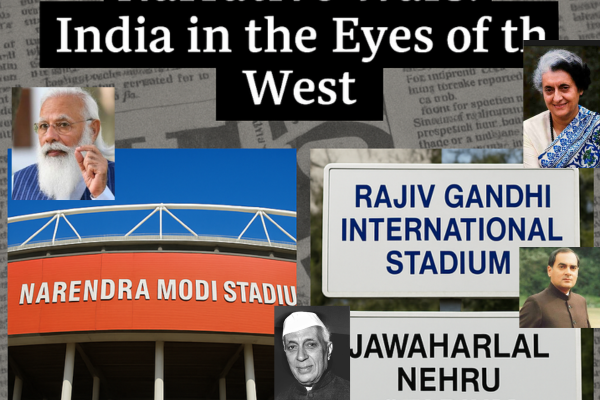Selective Outrage? The Guardian and Anish Kapoor’s Anti-India Narrative

Why is only Narendra Modi Stadium a problem, but Rajiv Gandhi and Nehru stadiums aren’t?
Timing is crucial when it comes to media narratives and geopolitics. Anish Kapoor, a British-Indian artist, wrote an essay in The Guardian that was highly critical of the naming of Ahmedabad’s Narendra Modi Stadium and compared it to “Hindu Taliban” symbolism. The piece’s timing and location also caused a lot of controversy.
Let’s examine what transpired, its broader ramifications, and the reasons why a large number of Indians are criticising what they see to be selective outrage and biassed reportage. Anti-India Propaganda in Foreign Media?
The Controversy
Internationally famous for his sculptures and political commentary, Anish Kapoor wrote an opinion piece in The Guardian comparing the naming of the largest cricket stadium in the world, Narendra Modi Stadium, to authoritarian nationalism and comparing it to religious extremism by calling it “Hindu Taliban” ideology.
According to the article, naming a large facility after a current prime minister is a concerning indication of growing Hindu nationalism and a cult of personality. Opinion articles are supposed to be thought-provoking, but many Indians thought Kapoor’s remarks were not just over the top, but also part of a larger plan to damage India’s reputation abroad. Anti-India Propaganda in Foreign Media?
The Double Standards at Play
The obvious inconsistency in the way political naming has been handled over time is one of the main points brought up by those who disagree with Kapoor’s piece. Indian stadiums, highways, airports, and even government programs have been named after Nehru-Gandhi family figures for many years. India is dotted with establishments bearing their names, ranging from the Jawaharlal Nehru Stadium in Delhi and Chennai to the Rajiv Gandhi International Stadium in Hyderabad. Anti-India Propaganda in Foreign Media?
However, the international media hardly often, if ever, criticised these. So why does the world press give so close attention to a stadium named after India’s democratically elected prime minister, Narendra Modi?
Some contend that the criticism is politically motivated in addition to being selective. This raises more general queries: Are narratives against India being promoted by foreign media? Is it reasonable to use Western ideological lenses to evaluate India’s democratic decisions? Anti-India Propaganda in Foreign Media?
The Timing Raises Questions
Many observers find the timing of Kapoor’s paper to be even more questionable. Days after tensions along the India-Pakistan border escalated, the article was released. Kapoor’s piece diverts attention from India’s delicate national security issue to domestic political disputes, which is a regrettable distraction that some contend serves the interests of adversarial neighbours more than it does the general public.
Why now? It is worthwhile to pose this question. Anti-India Propaganda in Foreign Media?
India has always been scrutinised by international media, sometimes impartially and other times with prejudice. However, there are significant questions regarding the intentions behind such storylines when geopolitics, cultural critique, and personal opinion come together in a reputable international publication.
Criticism or Anti-India Propaganda?
To be clear, it is not only acceptable but also necessary in a democracy to criticise political leaders or policies. However, when such criticism is applied selectively or is framed in cultural ways that agitate rather than educate, it becomes problematic.
In addition to being extremely upsetting to many Indians, calling Indian nationalism or pride the “Hindu Taliban” is also a dangerously false analogy. It confuses violent extremism and democratic nationalism, two phenomena that are completely different in terms of their ideologies, methods, and outcomes.
The Guardian has before and probably will continue to publish opinion pieces that are critical of Indian policy. However, when such judgements are made by people who have lived outside of India for a long time, they frequently lack the context, complexity, and even responsibility that domestic journalists are required to uphold.
A Call for Balanced Discourse
It is more crucial than ever for Indian and international media to report and critique properly in a time when global narratives have the power to affect public opinion and even international policy. This entails recognising discrepancies, challenging the chronology, and determining the beneficiaries of particular tales.
Anish Kapoor is entitled to voice his opinions. However, readers also have the right—and obligation—to wonder if these opinions are being exploited to further a larger, possibly more alarming goal.
While the title of Narendra Modi Stadium is debatable, so is the objectivity of foreign media in presenting the complexity of India. In our international discussions, we must not let artistic license or ideological alignment take the place of truth, justice, and context.
